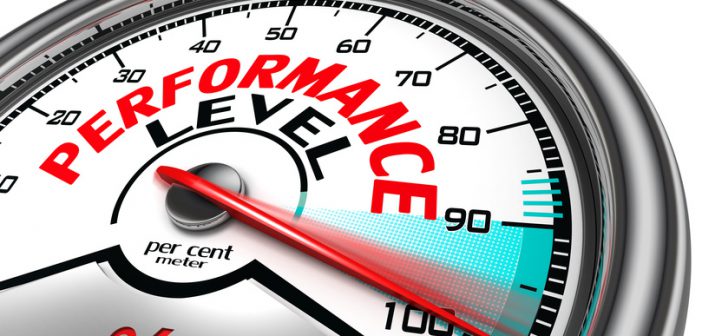![]() An interactive article – grab a pen and follow along!
An interactive article – grab a pen and follow along!
by DAVID LUND
You cannot manage what you cannot measure. – Peter Drucker
With major wage increases in many jurisdictions, it is more important than ever to have a system for planning and measuring labor productivity in your hotel. This system can be utilized in any size operation, so grab a pen and follow along!
This strategy may be a bit of work, but well worth the effort as the results are going to pay off big time.
The first thing to create is a baseline for current productivity in your hotel. If you have a food and beverage operation in addition to your rooms, you should create two baselines: one for your rooms operation and the other for F&B. The productivity measures to establish are hours per room occupied in the rooms department, and hours per cover served in the food and beverage department.
For your system to produce the numbers you need, you must split the payroll hours into three main groups (or buckets): rooms, F&B and other. Once you have the three main groups, split the first two groups again, so you will end up with five groups. The American Hotel Associations 11th revised edition of the Uniform System of Accounts for the Lodging Industry (USALI) revenue and expense dictionary lays out all the positions that fall into all the various departments of any hotel. For this exercise, you will use only three. By using three, you are able to get the two to measure separated from the third. Here are the three:
Positions in the “Rooms Department” include all persons with guest-facing rolls: reservations, guest arrival, reception (day and night), concierge, all housekeeping positions, public spaces cleaners and, if you have a laundry, include it as well. Add all positions, salaried and hourly, union or non-union. For this exercise now split the rooms section into two separate buckets: housekeeping and front desk.
Positions in the “F&B Department” include all persons who contribute directly to the service and operation of your restaurants: beverage operations, banquets, kitchens, meeting spaces, cleaners and stewards. Include servers, bussers, hosts, runners, cooks and dishwashers. Include all positions, both salaried and hourly, union or non-union. Next, split the F&B bucket into its two parts: kitchen and service.
“Other” will include all general administration, sales, maintenance, retail, spa, golf, grounds or any other position that does not directly support these departments.
Do not fuss too much about positions that seem to not belong in either bucket. Make a decision as to where you will record it and be consistent. The key here is to create the analysis and the productivity system.
Once the positions are organized into the five different buckets, group all record-keeping efforts in the same manner. All schedules, time sheets, payroll classifications, department numbers, etc. They need to be set up, so you can subtotal all the payroll activity within the five separate groups – both hours and dollars.
Now that the payroll is organized by group, it is time to start the analysis. The first section is the rooms, housekeeping and front desk. Pull time sheets or run reports from the time clock or payroll system. What you are looking for are the total hours worked in these two rooms categories by all colleagues for the past full calendar year. Yes, that’s right: one full year. You are only interested in productive hours, not vacations, holidays or sick pay. When you have the total hours worked in each category, divide it by the rooms occupied. Here is where you see the first light of day.
In a 75-room hotel that runs an annual occupancy of 75 percent, you are servicing over 20,500 rooms.
Determine the total productive hours for each category, housekeeping and front office and divide the hours by the rooms occupied to establish the baseline productivity for a full year. Overtime hours are just another hour, do not add a multiple for over time, it is 1-1.
Now, you have your baseline of .89153 for housekeeping and .337 for the front desk. Next, use this baseline to target the productivity, information that will be used for improvements. From this point forward, use the same buckets for weekly schedules and on these, add the forecasted rooms occupied daily. Also total the hours worked and divide that by the rooms occupied, producing a daily productivity and a total productivity for the week. Tracking and managing productivity is like a baseball game, with innings. You are going to win some innings and lose some, but what truly matters is the final score. Productivity is the same concept. There will be good productive days and poor days, mostly dependent on volume.
Always remember the most important things about managing labor:
Managers have little control over wage rates. Someone else sets most of these.
Managers have little control over business levels. Advertising and promotion efforts help, but the business that walks through the door, good or bad, needs to be serviced.
Managers do control the schedule. This is where they should put their focus.
Looking at this schedule, you can see the productivity scheduled for the week is below the annual standard of .892. The housekeeper must find some hours in their schedule. Looking at the least productive days of the week, he reduces the schedule by a total of 30 hours over three days.
The final and most important step is to update the schedule spreadsheet each day with the actual results for both rooms occupied, and the real hours worked.
In the scenario above, the hotel managed to almost meet the annual productivity target. By having a productivity target and something to measure by, they managed to save 26 hours from the original schedule. If this is done on a weekly basis, it can result in big savings.
Incentives
Now that the baseline is complete and the housekeeper is tracking and making improvements, it is time to introduce an incentive. Knowing that last year the baseline was .892, the target should be to improve this in 2018 – that means a lower number. For example, target a five percent improvement with a threshold improvement of 3.5 percent, and an exceptional target of eight percent. If housekeeping productivity increases by five percent, that means a thousand hours less payroll at 75 percent occupancy. Depending on your wage rate and benefits, this could easily be $25,000 in savings. Structure the incentive so it equates to a targeted $3,000 bonus, hit the threshold and it is $1,500, hit the exceptional target and it is $4,500.
By using a productivity improvement target, hoteliers are looking at potential savings if the goal is met and it can be met regardless of occupancy. Let’s say the year is a tough one and occupancy dips to 70 percent. Focusing on productivity can still be achieved because it can be achieved at any occupancy level. When you are achieving a higher productivity level, having incentives is smart when business is good or bad.
Innovation
This is a natural by-product of focusing on increasing productivity. Getting your team focused on what brings better work processes to the table is powerful. Leaders and staff all have ideas and when you set the stage to welcome those initiatives, people will appreciate you for taking their ideas and making them a reality. Many hands make light work. Being more productive is not about working harder, it is about working smarter. ■
Efficiency is doing better what is already being done. – Peter Drucker
David Lund, CHAE, “The Financial Hotel Coach,” is an international hospitality financial leadership expert who has held positions as a regional financial controller, corporate director and hotel manager with an international brand for 30 years. He authored an award-winning workshop and two books on hospitality financial leadership, coaches hospitality executives and delivers his financial leadership training worldwide. To learn more, visit www.hotelcoachdavid.com.
PHOTO CREDIT: DONSKARPO/SHUTTERSTOCK.COM
ICON AT TOP: VLADVM/SHUTTERSTOCK.COM




